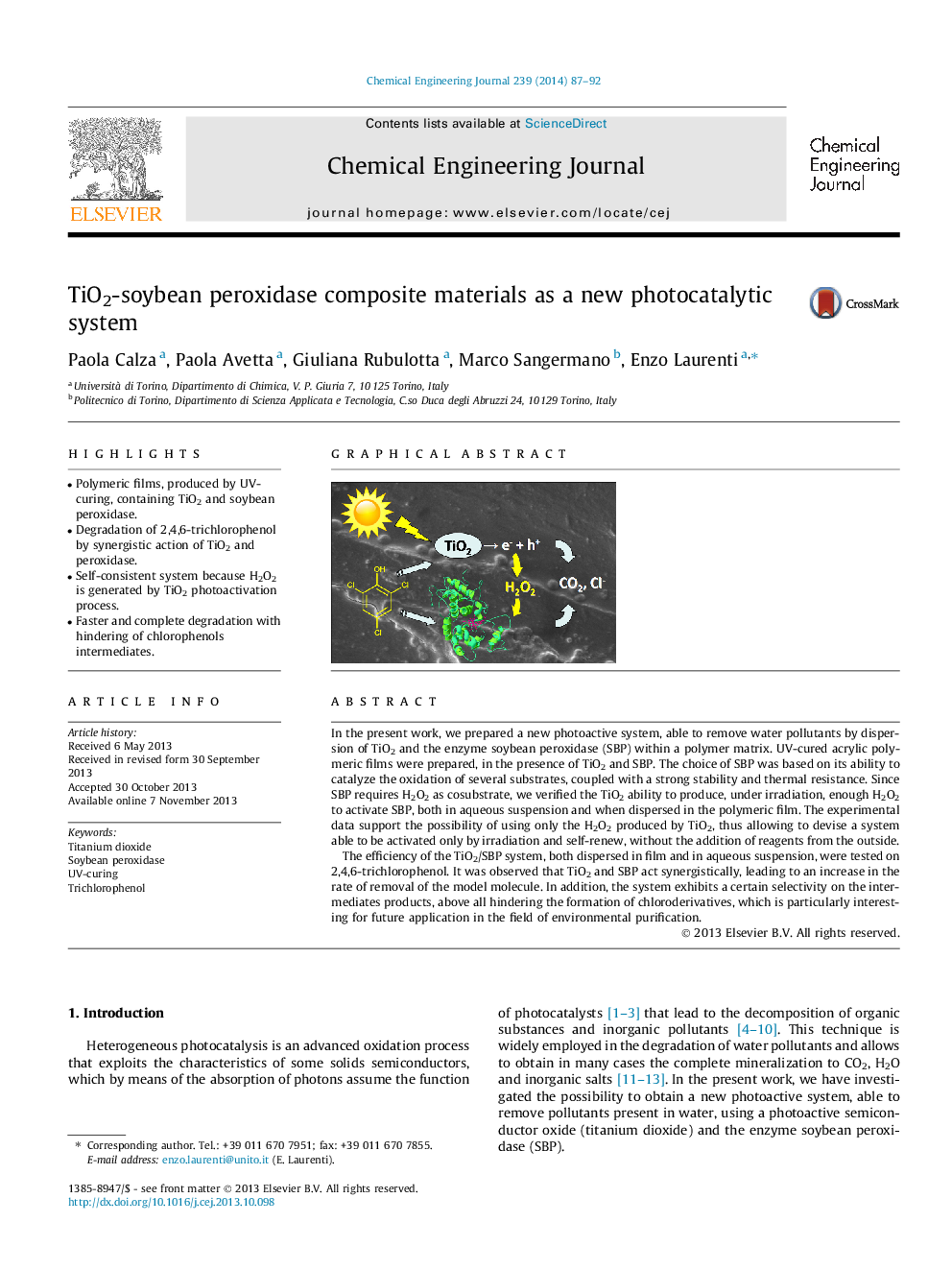| Article ID | Journal | Published Year | Pages | File Type |
|---|---|---|---|---|
| 147926 | Chemical Engineering Journal | 2014 | 6 Pages |
•Polymeric films, produced by UV-curing, containing TiO2 and soybean peroxidase.•Degradation of 2,4,6-trichlorophenol by synergistic action of TiO2 and peroxidase.•Self-consistent system because H2O2 is generated by TiO2 photoactivation process.•Faster and complete degradation with hindering of chlorophenols intermediates.
In the present work, we prepared a new photoactive system, able to remove water pollutants by dispersion of TiO2 and the enzyme soybean peroxidase (SBP) within a polymer matrix. UV-cured acrylic polymeric films were prepared, in the presence of TiO2 and SBP. The choice of SBP was based on its ability to catalyze the oxidation of several substrates, coupled with a strong stability and thermal resistance. Since SBP requires H2O2 as cosubstrate, we verified the TiO2 ability to produce, under irradiation, enough H2O2 to activate SBP, both in aqueous suspension and when dispersed in the polymeric film. The experimental data support the possibility of using only the H2O2 produced by TiO2, thus allowing to devise a system able to be activated only by irradiation and self-renew, without the addition of reagents from the outside.The efficiency of the TiO2/SBP system, both dispersed in film and in aqueous suspension, were tested on 2,4,6-trichlorophenol. It was observed that TiO2 and SBP act synergistically, leading to an increase in the rate of removal of the model molecule. In addition, the system exhibits a certain selectivity on the intermediates products, above all hindering the formation of chloroderivatives, which is particularly interesting for future application in the field of environmental purification.
Graphical abstractFigure optionsDownload full-size imageDownload as PowerPoint slide
